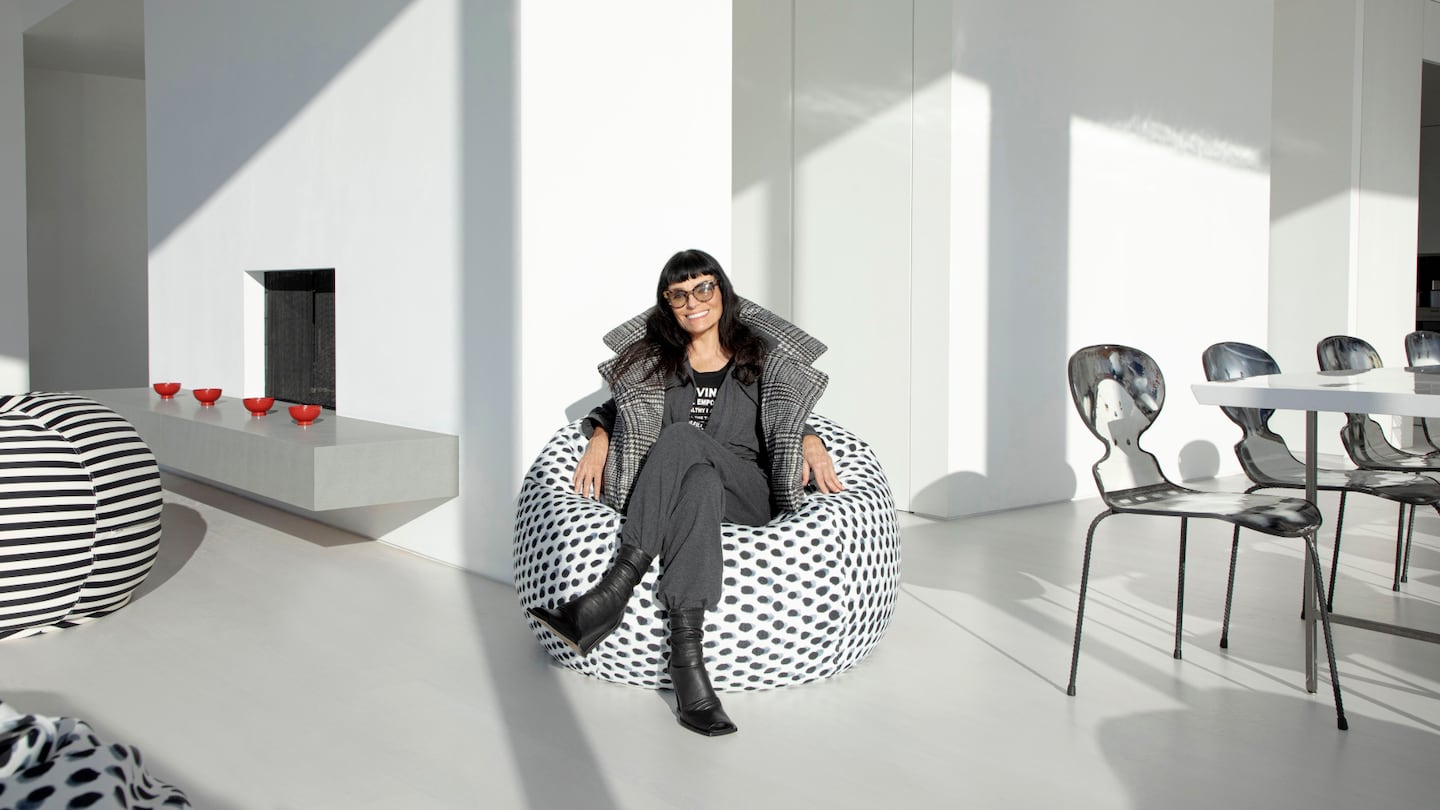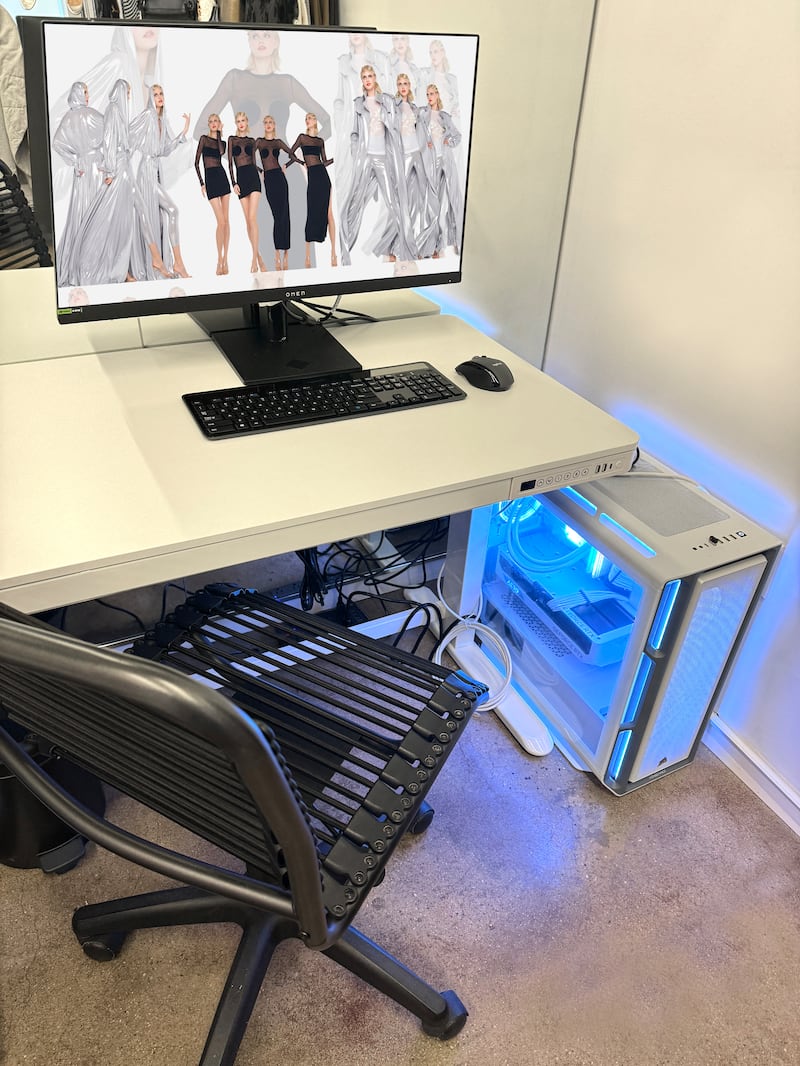
The Business of Fashion
Agenda-setting intelligence, analysis and advice for the global fashion community.

Agenda-setting intelligence, analysis and advice for the global fashion community.

At 78, Norma Kamali isn’t ready to retire. But the celebrated New York designer is starting to think about how the company she built from scratch and has run for more than 50 years will carry on when she eventually steps back.
Typically, this kind of succession planning entails preparing the right leadership to take creative oversight of the business and carry it forward. Kamali’s plan is to develop an AI version of herself to support them.
For months, she has been working with the AI-focused agency Maison Meta to build a custom tool that can generate new designs based on her creative DNA from text prompts. They’ve been feeding thousands of images from the brand’s archive into the model, teaching it the essence of her style.
The intent isn’t to have the machine replace human designers. Kamali thinks AI has its limits, and it will require people with original ideas to make the best use of it. Instead, the hope is that, when the day comes that she’s no longer there, her team will still be able to draw on her creativity as if she were.
ADVERTISEMENT
“The model will start to really be in the process of downloading my brain, so that when I train other people here to follow what I’ve done, the legacy of the company can literally continue and go on,” she said. “I have the advantage of that because it’s 56 years of content and there’s only been one designer. It hasn’t had different identities. It hasn’t had that mix up. It’s very exciting. It gives my company a really big value that way — in a way that nobody would’ve thought of before.”
Kamali isn’t just chasing the latest tech industry buzzword. Her enthusiasm for technology dates back to the 1960s, when she worked on an early computer — the Univac — as an employee of Northwest Airlines. She’s been interested in technology since, and in finding ways to use it in her business. A few years back, she began thinking about AI after working on a fashion game tied to a line she designed for Walmart. Now, generative AI is offering new possibilities.
The technology’s arrival on the fashion scene has sparked a rush by brands and retailers to find uses for it. They’re experimenting with AI for writing product descriptions and powering chatbots, while designers like Collina Strada’s Hillary Taymour and Julius Juul of Heliot Emil are turning to image-generating AI to push their creative boundaries. To make sure it maintains their aesthetic signatures and doesn’t just spit out generic designs, they train the AI on past collections. Kamali may be the first to do it so extensively, and for the purpose of continuing her legacy.

For a founder-led label like hers, succession is a vital issue. Numerous companies defined by their creators such as Helmut Lang and Ann Demeulemeester have struggled after their departures. Today, big players like Armani and Prada are in the midst of planning their own post-founder futures, undoubtedly working out the best way to preserve their businesses and creative visions.
AI offers a new, if unconventional, means for doing so — or at least attempting to. How well it works, or whether it can work at all, is still to be determined.
“The limitation of AI is that it can process data, but can it dream?” said Alice Bouleau, partner in charge of creative recruitment at Sterling International, an executive search firm that works in fashion and luxury. “Yes, of course, you can preserve the archive and you could have a billion alternatives to things you’ve done before. But can you guess what you should do next for a brand? This is where I’m more sceptical.”
Still, some brands might want to consider the option, Bouleau said, if they aim to maintain their current course with little change.
When Bouleau helps brands prepare for life after a founder, talent scouting for a successor begins well in advance. In the best-case scenario, the “future heir,” in Bouleau’s words, is able to work side-by-side with them for a year or two as they’re groomed to take over.
ADVERTISEMENT
Preparing an AI system goes a bit differently.
Maison Meta has been working with Kamali’s archive team to gather and prepare the imagery needed to train the AI, which Maison Meta said uses the open-source model Stable Diffusion XL as a foundation combined with another open-source tool called Fooocus that it customised for the job. Because there’s so much imagery, they’re going by categories, beginning with swimwear, one of Kamali’s specialties.
As part of the process, Maison Meta talked to Kamali about her workflow and how she would like to communicate with the AI. The images need to be tagged with keywords, such as the type of cut, the fabric and any other important details, so when Kamali later enters a text prompt, it understands what she’s asking for and can produce a corresponding image. The tagged imagery is fed into the AI model to train it. In the case of Kamali’s swimwear alone, there were about 10,000 images.
“It took us about a month to get it to the right point,” said Cyril Foiret, founder and creative director of Maison Meta. “Training itself is pretty heavy because you need big machines. To do batches of 1,500 [or] 2,000 images, it takes about seven hours of training. Then you have to do testing. You see what the results are. And then after this, you go on to the next one.”
Kamali also had some requests that posed challenges. For example, she wanted one consistent avatar for her generated swimwear designs to appear on, rather than having a different avatar with a different body every time she entered a prompt. Foiret said they essentially had to develop a mini AI model just for that.
“It was not too easy,” he said. “This took also about a month to have her right.”
Once they’ve finished training the AI on all the different product categories, they’ll combine everything in a master model. The whole system runs from a computer Foiret installed in Kamali’s office so it’s secure, rather than having it run on the cloud.
Kamali wants to use the AI to design a swimwear collection first. But it’s still a work in progress — “rough and raw” she called it — and she’s trying to understand how it will fit into the company. She’s convinced it will ultimately transform how the business can operate.
ADVERTISEMENT
“I keep thinking about it as this baby that’s learning to walk, but it’s this genius at the same time,” Kamali said. “I’m going along with that. I’m learning and experimenting and each day I’m going to figure out how I integrate it into the future of the company.”
Kamali first considered training her own AI after crossing paths with an e-commerce company that wanted to have AI do all its design. As Kamali put it, it wanted to download her brain. She said no, but the thought of doing something similar for her own company stuck. Last year, she contacted Maison Meta, which was creating a name for itself through projects like organising the first AI Fashion Week with Revolve.
Maison Meta by then was already noodling on a concept it called “future vintage,” according to Nima Abbasi, partner at the company. What if you could take all the work of a designer such as Vivienne Westwood, who died in 2022, and use it to build a data set that would allow for new creations in her spirit? There could be other uses, too.
“A private equity [firm] or an investor that wants to buy a dormant brand, let’s say a Romeo Gigli, and wants to reinvent it without paying a designer to go and design the clothes, we can help them see the future of the brand from a design perspective without them having to actually go make the investment,” Abbasi said.
Of course, there are qualities a founder offers that can’t be replicated by AI. They set a culture for their company and give a sense of purpose to their employees and the product, noted Bouleau of Sterling International. When they leave, the company will still need a strategic thinker who can provide that.
“AI cannot tell you why this brand is this brand. What is the reason why of this product?” she said.
Designers also evolve over time, she added. A company can stagnate if it’s too focused on the past.
Kamali said if her company is going to use AI it has to produce ideas that combine what she’s done in the past into something unique and innovative. She has her own reservations about AI’s abilities.
“When a designer designs a collection, it has to have a soul,” she said. “Sometimes I feel like AI designs are soulless.”
Kamali, who is a patternmaker, believes any design must have a strong connection to the pattern. She’s not certain right now how they’ll achieve that with AI designs and is still determining which parts of the company will be trained to use her AI system. It might not just be the design team. (There are companies working on AI tools that can generate patterns, but they aren’t open-source and integrating the technology into Maison Meta’s custom AI would be an entirely new challenge.)
No matter what, Kamali believes human creativity will remain indispensable. She emphasised that human originality is different from AI.
“There are things that AI will not replace,” she said. “But AI will provide new opportunities that we can’t resist.”
From ChatGPT to Midjourney to Runway, the emerging technology is already showing why it could be one of the most consequential in decades for the fashion industry. Early adopters and experts unpack the opportunities and challenges of putting gen AI to use to design products, create campaigns and other content, and better connect with customers.
The buzzy brand, which used the technology to help design the collection it showed at New York Fashion Week, appears to be the first to use it to create physical runway looks, or at least the first to acknowledge it.
Many fashion students, far from being unmitigated technophiles, are still distrusting of the technology, while educators at schools from London’s Central Saint Martin to Parsons in New York are navigating how best to approach it.

Marc Bain is Technology Correspondent at The Business of Fashion. He is based in New York and drives BoF’s coverage of technology and innovation, from start-ups to Big Tech.
The algorithms TikTok relies on for its operations are deemed core to ByteDance overall operations, which would make a sale of the app with algorithms highly unlikely.
The app, owned by TikTok parent company ByteDance, has been promising to help emerging US labels get started selling in China at the same time that TikTok stares down a ban by the US for its ties to China.
Zero10 offers digital solutions through AR mirrors, leveraged in-store and in window displays, to brands like Tommy Hilfiger and Coach. Co-founder and CEO George Yashin discusses the latest advancements in AR and how fashion companies can leverage the technology to boost consumer experiences via retail touchpoints and brand experiences.
Four years ago, when the Trump administration threatened to ban TikTok in the US, its Chinese parent company ByteDance Ltd. worked out a preliminary deal to sell the short video app’s business. Not this time.